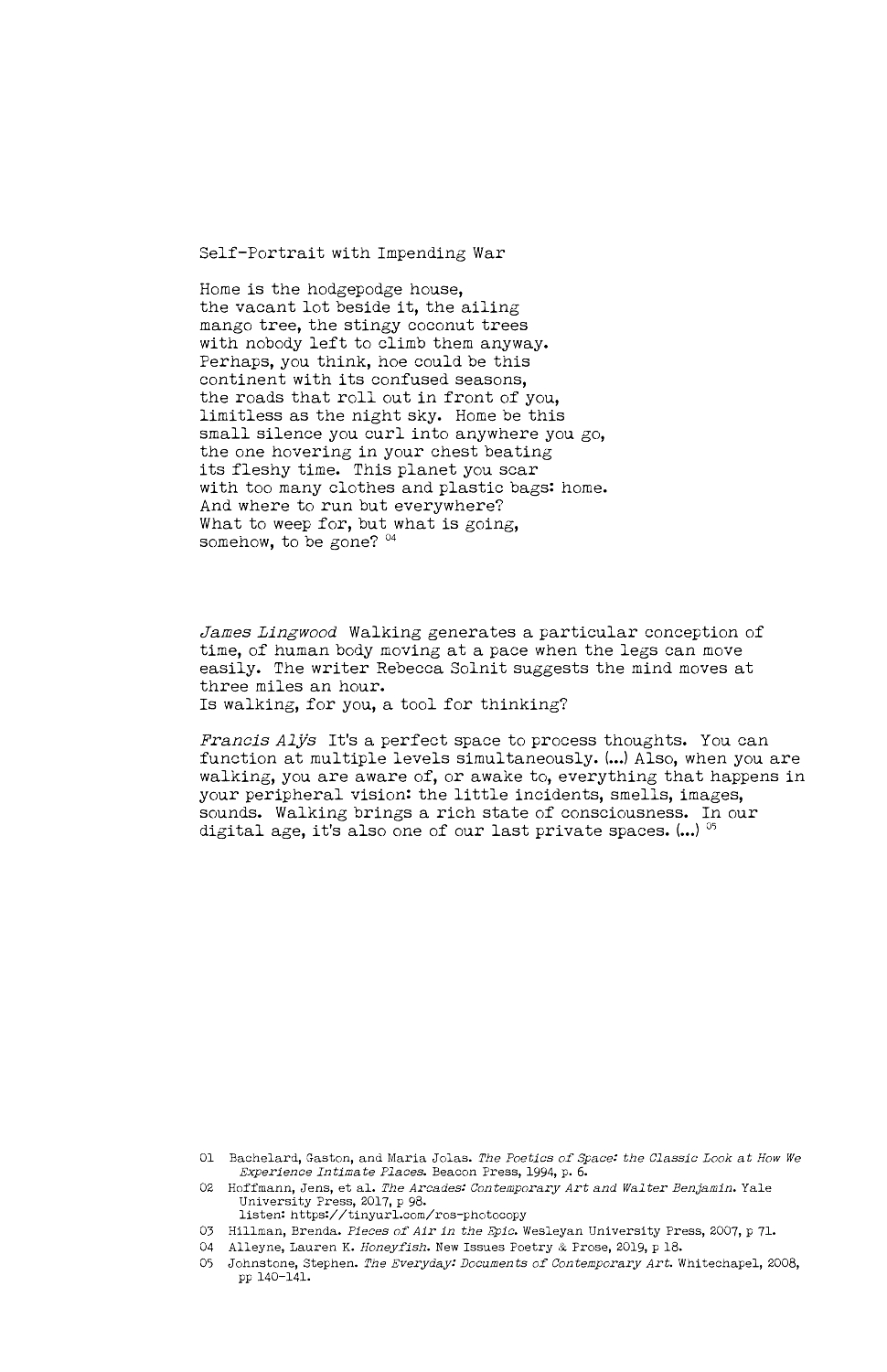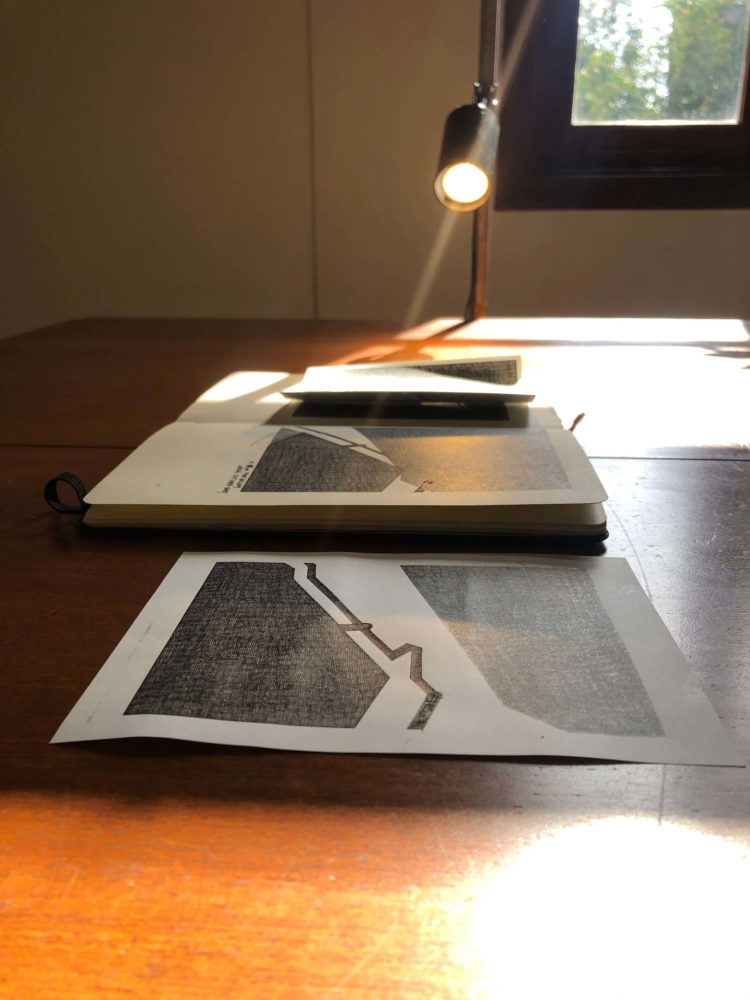ROOM 3 — Levels
Left: 139 skillman avenue, 001-100, John Ros, Right: 139 skillman avenue, video, John Ros
Bottom: 139 skillman avenue, Text .PDF
Domestic Moving, Veeranganakumari Solanki
Voices, David Flindall
Overhaul Exhibition, William Hughes
Left: Untitled, Vishwa Shroff – Middle: Gathering 2, Karen Levitov – Right: Hallway 01, Melissa Staiger
The final room, Room 3, is a more complex space. Here we discover the levels, layers, shapes and sounds that make up our domestic spaces. With the works presented we take a step back from the objects or memory and look at the physical spaces we live within and any objects become incidental. We step away from the frame of a memory and are transported into the frame of a space.
Flindall’s sound piece doing this immediately. A recording of a zoom call with friends, he layers the conversation and reverberates their voices to fill the empty space of the domestic in this current time. We are not allowed to be with anyone else in our domestic spaces during Covid-19, instead we are transported to a memory of a time when our homes were filled with other people. We now we find ourselves with our objects, their personalities as mentioned above becoming our new social norm.
Through this the corridors, staircases, hallways and the boundaries of our domestic spaces become more linear and less cluttered. With Ros’ work we are presented with the floorplan of his domestic space which then begins to mis-shapen and the boundaries blur and bend, his home morphing into something else, breathing a new life. We witness this change through a formal grid that, looks almost like a x-ray, of the domestic spaces metamorphosis into something ‘other’, it’s many layers of use, potential or how Ros conceptualises his space, as with the Francis Alys quote in Ros’ accompanying text, “It’s a perfect space to process thoughts. You can function at multiple levels simultaneously.”
This is also something that Hughes, discusses in his series of photographs (and a live Instagram tour prior to this exhibition). He takes his family hallway and peels back the layers of objects, frames and ‘stuff’ and invited us to look at the shadows of memory, of what has been there before, of how the space has changed over the years. “I wanted to fully create an exhibition in a domestic space that links parts of the home together: that being the hallway. Overhaul was created in the space based on residual mark, memory; nostalgic handed down material and the concept of ‘if walls could talk’. The amount of memories these walls we live in would hold, if they could talk these would be the most reliable interpretations.“
Our homes do function in multiple ways, we each use it for the same things — for sleep, to eat, to wash, and also in various ways too, as studios, galleries, offices, to socialise, to meditate. It is the stark similarities between how we exist in a domestic space (as they are designed intentionally for us to do so) that link all three rooms together.
We know each of these spaces, levels, surfaces and frames — we recognise ourselves within them. The artists have allowed us to look back at ourselves and our own spaces in a new way. To see how we have curated our homes or how the spaces we live in are the frames we exist within. More now then ever, our private spaces have become public. They represent how we are contextualised, and maybe more importantly, how we present ourselves as we invite others into our spaces through the screen.









